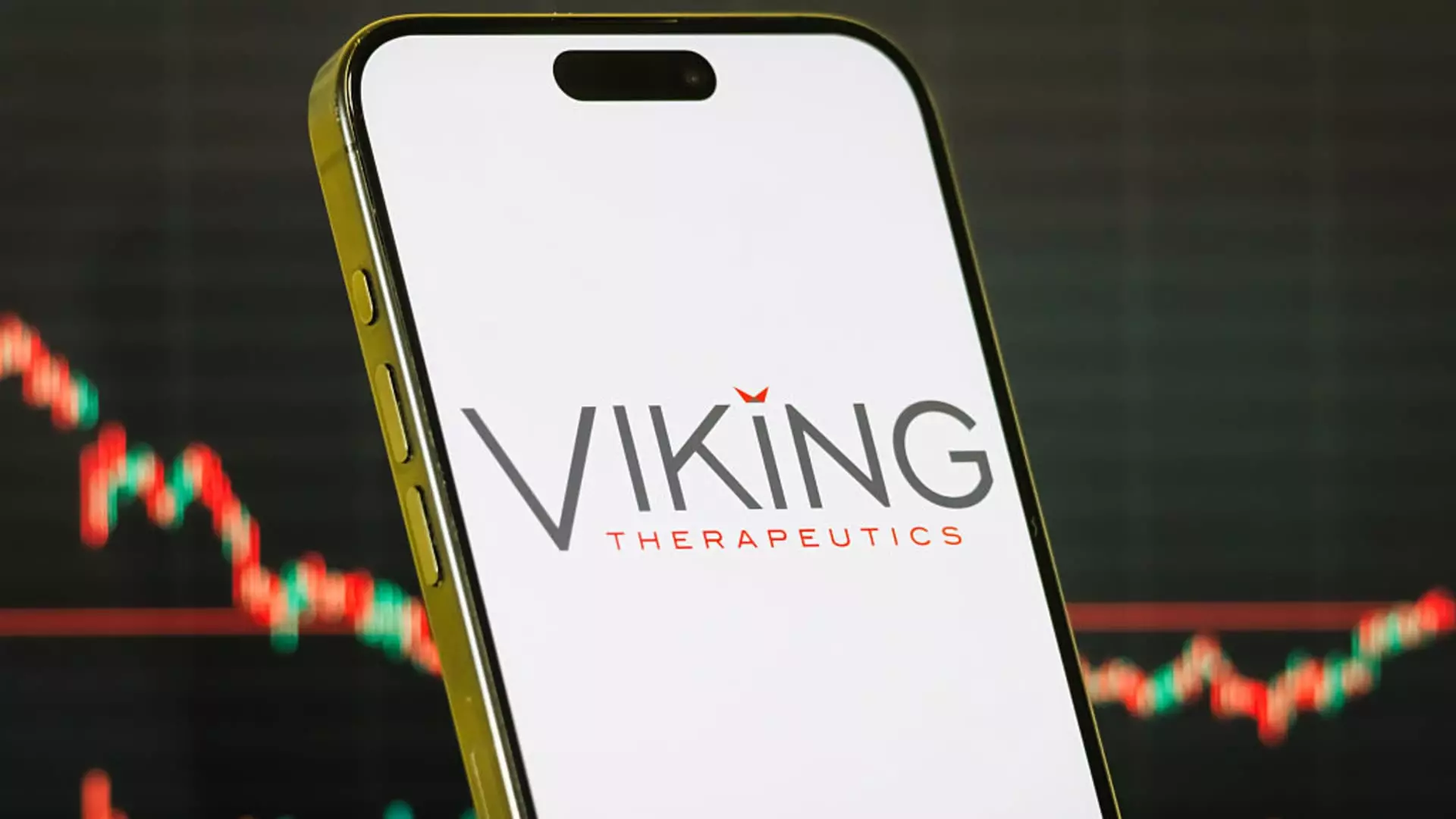Viking Therapeutics’ recent release of mid-stage trial data has cast a stark shadow over its prospects in the fiercely competitive realm of obesity therapeutics. Once hailed as a promising candidate with disruptive potential, Viking’s shares plunged more than 40%, signaling investors’ and industry insiders’ harsh realization: the company’s efforts may not be enough to challenge the entrenched giants. While its pill demonstrated some weight loss efficacy, its failure to outperform rivals like Eli Lilly and Novo Nordisk underscores a brutal truth—the road to a market-leading obesity drug is far more challenging and uncertain than many initially believed.
This disappointing outcome exemplifies the peril of overestimating early-phase success and underestimating the complexities of drug development. Viking’s promising data, which suggested up to 12.2% weight loss over three months, was overshadowed by issues like high discontinuation rates and significant side effects. Investors, who once foresaw Viking capturing a sizable part of this lucrative market, now must grapple with the sobering reality: the competition is relentless, and the barriers to market entry are formidable.
Market Dominance of Giants: An Inevitable Reality
The weight loss and diabetes drug industry is increasingly concentrated in the hands of a few megacorporations, notably Eli Lilly and Novo Nordisk. Their drugs, designed with better safety profiles and longer trial durations, have set a high bar that Viking’s comparatively shorter studies and less impressive results struggle to meet. Eli Lilly’s ongoing phase three trial of its oral medication for weight loss boasts nearly equivalent efficacy (11.2% weight reduction over 72 weeks) with considerably lower discontinuation rates, an advantage that’s unlikely to be overrun easily.
The dominance of these pharmaceutical behemoths isn’t accidental. They have invested heavily—not only in state-of-the-art science but also in the infrastructure and regulatory pathways needed for long-term success. Viking’s setback highlights the sheer difficulty of late-stage development for smaller biotech firms. The monopolistic hold that Lilly and Novo Nordisk maintain only reinforces their capacity to innovate further, often leaving newcomers like Viking struggling in the shadows.
This environment doesn’t just favor established players; it fosters a brutal, winner-takes-all atmosphere where any vapor of success gets amplified, while failure is magnified, as seen in Viking’s case. Their results reflect the brutal truth that innovation alone isn’t enough; scalability, safety, and sustained efficacy in large, diverse populations are the real gates to market dominance.
Side Effects and Patient Compliance: The Hidden Obstacle
Viking’s trial data revealed concerning tolerability issues. Nearly 58% of patients reported nausea and 26% experienced vomiting—significant side effects that threaten to derail real-world adoption. While common in weight-loss pharmacotherapies, such adverse reactions can severely impact patient adherence, undermining the long-term benefits potential. The high discontinuation rate—around 28% over just 13 weeks—illuminates a profound obstacle: even promising biological mechanisms face real-world hurdles when patient comfort and safety aren’t prioritized.
Compared to Eli Lilly’s or Novo Nordisk’s offerings, Viking’s shorter-term data paint a picture of a drug with uncomfortable side effects that could discourage sustained use. The tolerability of a treatment is paramount in chronic conditions like obesity, where adherence is vital for meaningful outcomes. If a drug causes nausea and vomiting at high rates, especially early on, it risks becoming a failure not because of scientific ineffectiveness but due to patient rejection.
This aspect exposes a critical flaw in Viking’s development strategy: that the science behind targeting gut hormones alone isn’t sufficient without a keen focus on improving tolerability. The public health challenge isn’t just about creating effective medications but about ensuring those medications are safe, tolerable, and accessible over the long term. Viking’s current trajectory suggests that it may underestimate the importance of these factors in its pursuit of market relevance.
Strategic Implications and the Future of Obesity Treatments
Taking stock of Viking’s setbacks, it’s clear that innovation alone won’t secure a foothold in this booming sector. The relentless march of competitors with more refined, longer-tested, and better-tolerated drugs means that smaller players will have to rethink their strategies or risk obsolescence. The market isn’t just hungry for weight-loss pills; it demands safe, effective, and sustainable solutions—criteria the current Viking data struggles to meet comprehensively.
Furthermore, the development of oral drugs targeting complex hormonal pathways may have been oversold as a game-changer. The health and regulatory hurdles are significantly underestimated, and the industry’s focus on speed may ultimately sacrifice the quality and tolerability necessary for long-term success. The brutal reality is that the winners will be those who can combine scientific innovation with patient-centric drug design and strategic patience.
In this brutal landscape, Viking’s recent setback isn’t the end of the road—it’s a harbinger. The future of obesity pharmacotherapy will likely continue to be dominated by a few giants capable of scaling complex trials, optimizing tolerability, and navigating regulatory challenges. Smaller companies will need not just innovative science but strategic resilience and a deep understanding that in this fight, patience and perseverance count just as much as groundbreaking chemistry.


Leave a Reply